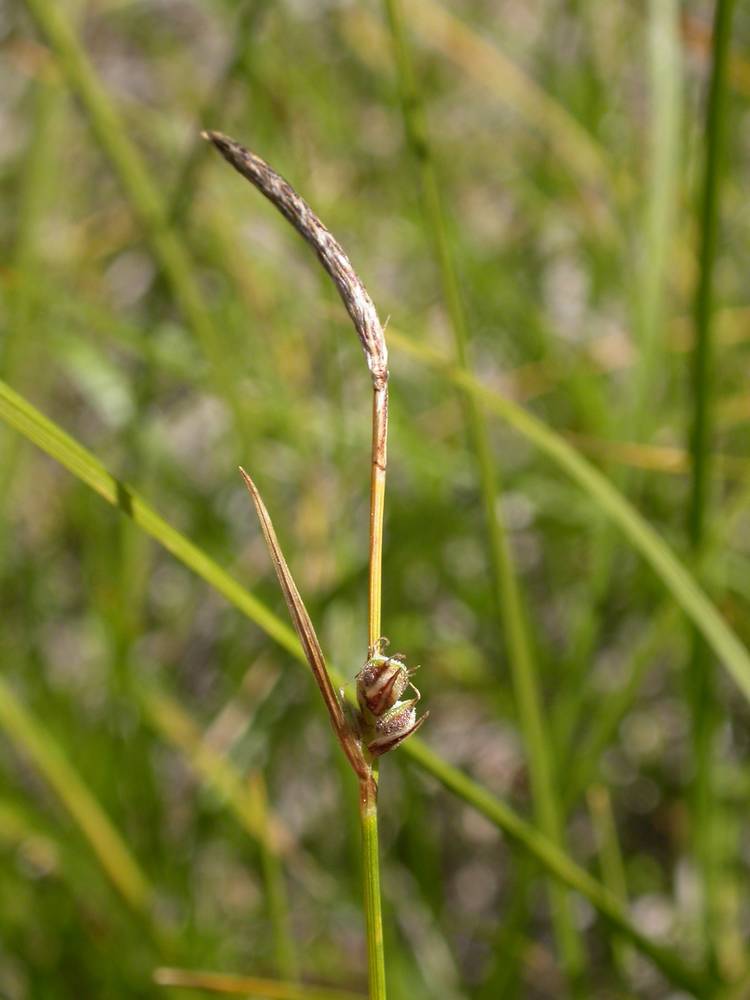Carex inops ssp. inops
long-rhizome sedge
0.7–4.5 mm wide, green, not papillose on the lower surface.
basal spikes none or rarely present; female; on long; slender stalk, bracts of lowest lateral spikes bristle-like or leaf-like; shorter than the inflorescence;
lateral spikes 1–4; female; each about 1.5 mm long or shorter, with 5–15 perigynia; terminal spike male, 1–2.5 cm long; held above the female spikes on peduncles (0.8)2.5–20 mm long.
obovoid, 2.8–4.6 × 1.5–2.2 mm, pale green to pale brown, pubescent; veinless except for 2 marginal ribs, bases succulent, withering when dry;
beaks 0.4–1.3 mm long;
teeth 0.1–0.7 mm long;
stigmas 3.
trigonous.
subequal to the perigynia; reddish brown, brown, or purplish with narrow white margins.
Carex inops ssp. inops
Dry, open, conifer forests, meadows, low elevation prairies and Quercus garryana savannas. 100–2300 m. Casc, ECas, Est, WV. CA, WA; north to British Columbia. Native.
Carex inops ssp. inops is a common, rhizomatous, upland species with hairy perigynia in short female spikes. Carex rossii and C. deflexa have similar perigynia but are more or less cespitose and have basal female spikes hidden among the leaf bases and longer inflorescence bracts. Tolerant of trampling, C. inops ssp. inops is useful for restoration.
Barbara Wilson, Richard Brainerd, Nick Otting
- Local floras:
BC,
CA,
OR,
WA
- Local Web sites:
CalFlora,
CalPhotos,
Flora NW,
PNW Herbaria
WildflowerSearch
iNaturalist (observations)
USDA Plants Database
- LBJ Wildflower Center
- SEINet
- Plants of the World Online
- Encyclopedia of Life
- Wikipedia
- Google Image Search

